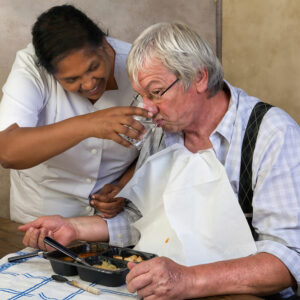9 glaring signs of developing psoriasis

Psoriasis is a skin disease characterized by inflammation in the body. Dead skin cells build up on the skin’s surface, causing itching, burning, or stinging sensations. Psoriasis can appear in small spots or cover larger areas around the ears, feet, hands, eyelids, nails, scalp, or genitals. Sometimes, it may appear in more than one place at once. When it affects areas like the face or hands, it can significantly reduce the quality of life.
Glaring signs of psoriasis
Plaque development
Plaques are another most common sign of psoriasis. They are red, thick, raised patches on the skin that can be covered with a thin, silvery-white coating known as scale. The size of plaques may also vary, and they may join together to form larger patches. Most commonly, plaques may appear on the scalp, elbows, knees, or lower back.
Dry skin
The plaques or scales in psoriasis can disrupt the skin’s moisture and often lead to dry skin. In cases like erythrodermic psoriasis, the skin may even look burnt.
Persistent itching
Itching around and on the thickened skin is another common sign of psoriasis. However, one should avoid scratching the affected areas since it can thicken the patches and worsen symptoms.
Inflammation
Swelling, stiffness, and joint pain are common signs of psoriasis caused due to inflammation.
Bumps on skin
One may also experience tiny bumps on the skin that appear out of nowhere. They usually are seen in areas where the skin rubs against the skin, like armpits or genitals. They may also appear on the torso, legs, or arms or even develop on the face. They may be scaly, small, light pinkish, and sometimes appear like brown dots. Psoriasis bumps may be temporary and clear out within weeks. Some may return, while some may not.
Sometimes, the bumps may be filled with pus and appear on hands and feet. If one notices these bumps, it’s best not to disregard them as an allergy or infection. Get them checked medically by a skin specialist.
Red patches
One may notice smooth, red patches of skin or swollen red skin dotted with bumps, especially in the case of inverse psoriasis. They may be tiny, sore to the touch, and look raw.
Sore skin
The condition often makes the skin feel painful or sore, making simple acts like walking or lifting hands unbearable. One may also experience heel pain or tender joints and heels.
Fever and muscle weakness
Psoriasis patients may also fall ill, experience muscle weakness, chills, or a rapid pulse, run a temperature and need immediate medical attention. They may also notice unnatural morning stiffness.
Tiny dents on nails
Nail psoriasis is a condition that can cause the appearance of pits or dents on nails. These pits can be white, yellow, or brown in color. Additionally, the affected nails feel rough to the touch and brittle and lift up from the nail bed due to a buildup of skin beneath them.



